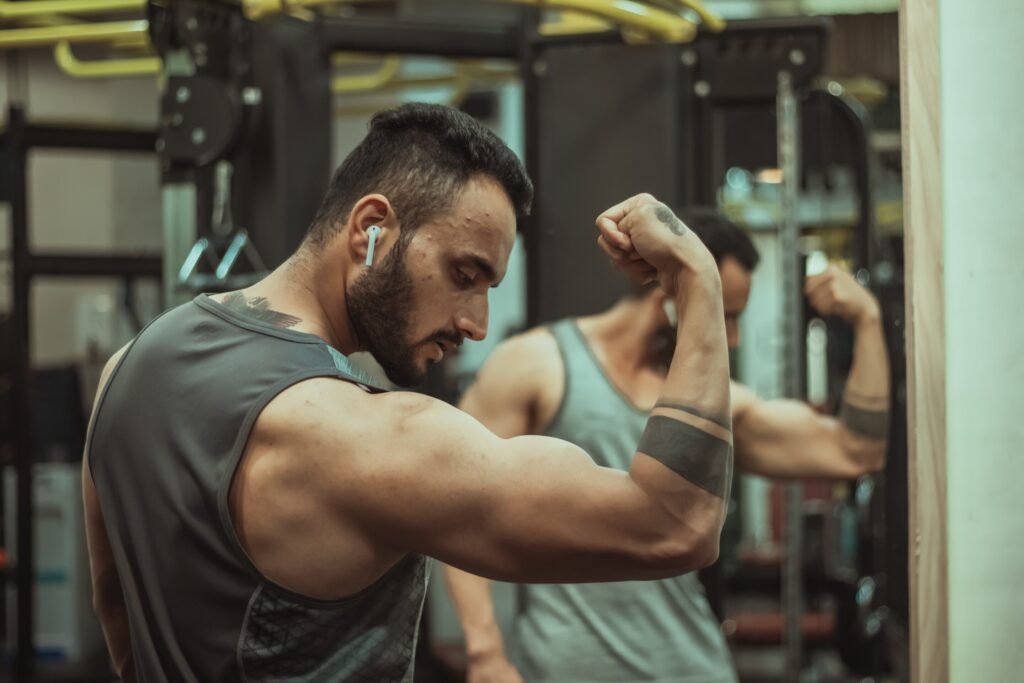Men have cared about their appearance throughout the centuries, and ideals of masculinity and “manliness” are ancient—with strong emphasis put on physical fitness and virility. In ancient Greece, the ideal male body was considered strong, symmetrical and athletic.
Now, with easier access to performance and image-enhancing drugs (PIEDs) and their promotion on social media, ideals of masculinity and muscularity have taken on a whole new level.
PIEDs are a class of drugs that some people use to enhance physical appearance or athletic performance. They include anabolic-androgenic steroids, human growth hormone, and other medicines used “off-label” such as insulin.
Social media platforms such as Instagram and TikTok flood us with images and videos promoting steroid use as a “quick fix” to achieve big muscles.
Other influencers promote muscularity by “natural” means, but are then found out as liars who were using steroids all along. For those following, especially impressionable young men, the fallout is real. What once seemed like a natural achievement is exposed as chemically enhanced, pushing young men to wonder whether steroids are the only way to keep up.
A growing and harmful trend
Recent studies show that muscle-building behaviors such as steroid use are rising among young men. But why is this happening?
The answer lies partly in a societal obsession with hypermasculine ideals. Images of sculpted bodies, amplified by social media influencers with millions of followers, set unattainable standards of physical perfection. Fitness influencer content often normalizes extreme body ideals.
The focus has shifted from just fitness to shaping an identity around an ideal male body. This trend is not harmless, as the use of steroids poses significant health risks, including heart disease, liver damage, mood disorders, aggression, and depression. Some fitness influencers and bodybuilders who use Performance and Image Enhancing Drugs (PIEDs) have tragically died unexpectedly, highlighting the dangers associated with steroid use.
To address these risks, many fitness influencers are engaging in online fitness coaching, including providing guidance on how to use steroids and other enhancement drugs within a “safer use” model informed by harm reduction approaches. While these approaches aim to mitigate known harms, not all advice is created equal due to the lack of formal regulation in this area.
Rather than pointing fingers or shaming individuals for their choices, a more positive and educational approach is advocated. Collaborating with trusted community figures and influencers can help spread awareness about the dangers of steroid use while providing accurate, evidence-based information on health and well-being. Figures like Vigorous Steve in the fitness world have used their platforms to share important research on the harms of steroids and promote harm reduction education to a wide audience.
In line with this approach, the Queensland Injectors Voice for Advocacy and Action (QuIVAA) has launched the Steroid QNECT program to provide support and information on safer use practices.


